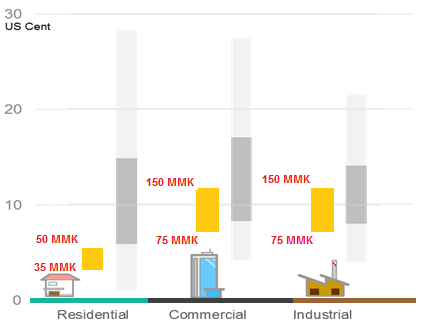Myanmar identified four main drivers for its energy policy framework:
- to maintain energy independent,
- to promote utilization of renewable energy,
- to promote energy efficiency,
- to promote use of alternative fuels.
There are several ministries that are working on energy sector in Myanmar. Ministry of Energy focuses primarily on exploration and production of oil and gas. Ministry of Forestry is responsible for biomass utilization planning. Parts of renewable energy development are within the scope of Ministry of Science and Technology. Coal mining is regulated by Ministry of Mines. The Electricity Act of 1948 (with amendment in 1967), the Myanmar Electricity Law, and the Electricity Rules (1985) are major regulations for electricity sector in Myanmar. Two ministries are responsible for the power sector: Ministry of Electric Power No. 1 (MOEP1) and Ministry of Electric Power No. 2 (MOEP2). The main responsibility of MOEP1 is the development of hydropower, which is the main source for electricity generation in Myanmar. The MOEP2 focuses on the transmission and distribution of electricity.
Myanmar has developed National Energy Policy (issued in 2014), that aims to systematically explore the available energy resources of the country to meet the demand of the country and to export value added products for surplus resources; thus, ultimately improving the living standard of the people in Myanmar sustainably. This policy aims to electrify 100% of Myanmar’s households by 2030, which comprises to connecting more than 7.2 million households within 2014-2030. Therefore, the country has to increase its electricity generation capacity to 16.6 GW. Currently, Myanmar has a total installed capacity of around 4 GW within the grid system which is mostly based on hydropower, natural gas power plant, and coal-fired power plants.
